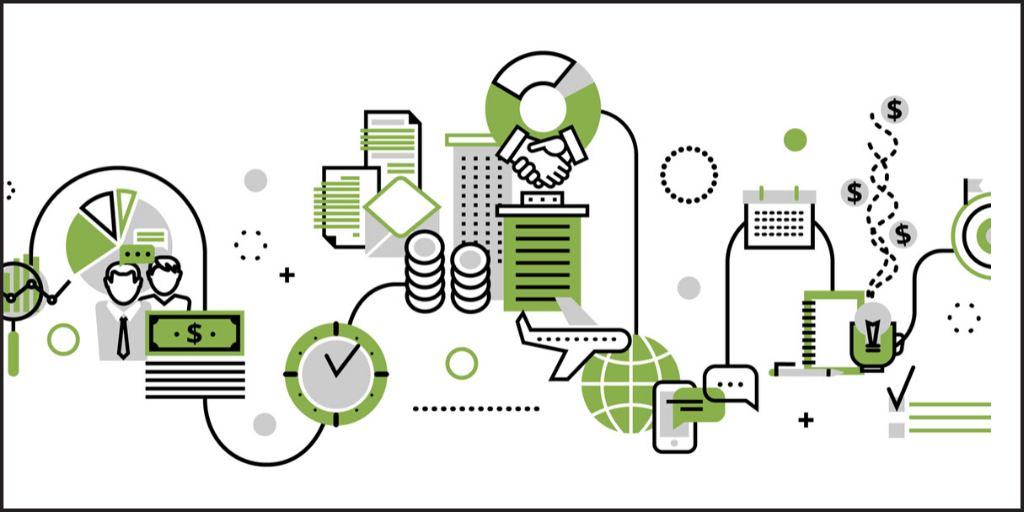1. Start counting
There are few more powerful things in a leader’s armoury than having the numbers. Start measuring your environmental impact, from the low-hanging fruit such as the volume of waste the organisation produces to more broad initiatives like the potential energy reductions you could achieve from people working from home. Take a much broader mindset beyond simply environmental impact alone. The ESG (Environmental, Social, and Governance) criteria are commonly used as three central factors in measuring an organisation's environmental and societal impact, but don't get bogged down in perfect measurement. Once you have the numbers, you can begin to set targets.

2. Appoint a ‘CEO’ of sustainability
Sustainability doesn't need a champion, it needs a leader. This person should not only be committed to the purpose of the project, but also have a large degree of political sway within the organisation and be part of the strategic conversations at senior levels. The CEO themselves will also need to spend some of their own political capital in support of sustainability, backing the project where difficult decisions are required, and encourage the sort of cross-division collaboration that has been so common during the coronavirus pandemic.

3. Explore the science
Sustainability is top of the scientific agenda, particularly when it comes to environmental sustainability. Many of the ideas generated can directly impact on industry – but often industry is not listening. Actively search out research in your area and see how you could activate it in your organisation. Reach out to local academics and attend conferences; game-changing innovations (as well as those easy wins you just haven’t found yet) could be out there. Collaboration is key to solving sustainability challenges.
Read 'The business of sustainability: recommended reading for leaders'
4. Spend sustainably
All organisations are part of a chain, and how each organisation acts effects the rest of that chain. By utilising your spending power, you can effect other organisation's choices in a positive direction. Work with competitors to increase your collective bargaining power and utilise economies of scale where possible. Internally, ensure you invest in diverse hiring practices, put good governance above short-term financial gain, and incentivise these good practices throughout your organisation.

5. Make it real
Every organisation, industry and local environment is unique. Bring your teams together internally for dedicated workshops around how to make the organisation more environmentally sustainable and deliver more broader benefits to society. If possible, invite outside sources to demonstrate how others have done it and provoke new thinking. Like any innovation process, concrete actions, feedback loops, regular follow-ups and communication of successes and failures are crucial.
Read 'Enabling Innovation, Sustaining Innovation' Long Read
6. Align your purpose
Before committing to a large-scale sustainability project, a leader should consider how it affects the purpose of the organisation. For most, this should be a natural process and, indeed, may begin to give their purpose more meaning. For some however, it may bring up some fundamental questions. If there is an inescapable dichotomy between the aims of sustainability and your organisation’s purpose, then leaders must weigh the ethical imperatives and choose the future pathway they can take.
Download 'Purpose Led Leadership' infographic
7. Communicate the (big, audacious) goal
A move to becoming a more sustainable organisation will energise a workforce. Leaders should aim high in the long-term but with clear next steps and targets. Publishing that initial data publicly will give the impetus to individuals within the organisation to reduce their relevant output, and the leadership itself to follow-through. Adding sustainability goals to annual reports, and linking them to incentives, will again encourage people to focus on the issue day-to-day.
Read the 'Leader’s Role in Strategy Execution'
8. From project to culture
Inevitably, the initial phases of making your organisation more sustainable will take on all the aspects of a classic project; you measure, you improve, you report. For it to become part of the culture however, sustainability will have to become part of the purpose of the organisation, be part of the way the organisations measures success, and part of the way it innovates and evolves. As we move out of 2020, and all its disruptions, it's up to leaders to project a vision of the future people want to belong to.
Listen to 'Operationalising your Purpose' podcast with Kris Sirchio







